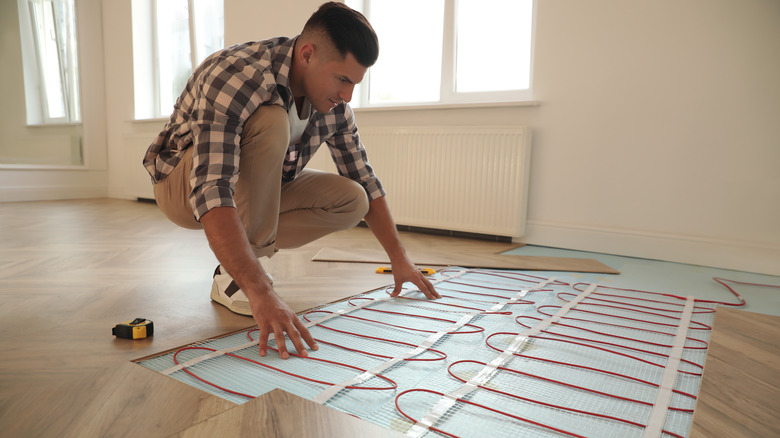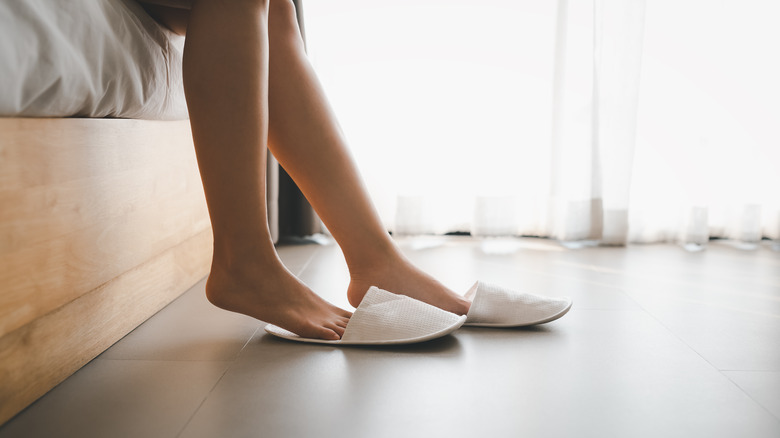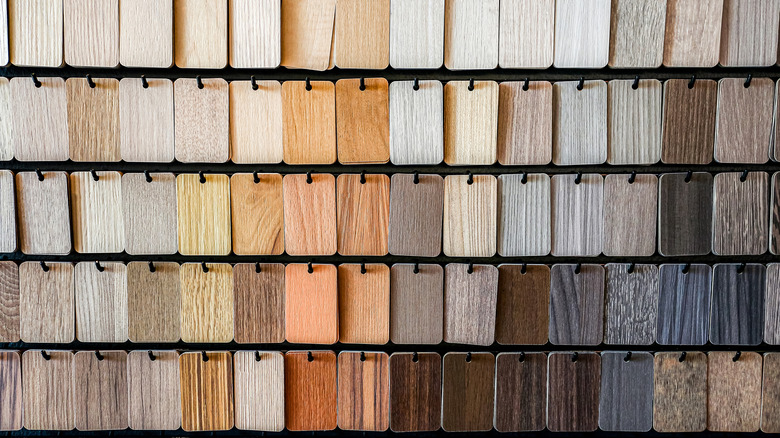Is It Possible To Use Radiant Floor Heating With Hard Wood?
Radiant heat is a network of coils or tubes filled with heated water or hot air running underneath your floor. The system is a cost-efficient way to keep floors warm and rooms comfortable by maintaining a target temperature of about 80 degrees Fahrenheit, but depending on the floor, the heat may have to be limited.
Given the different types of wood floors, the quick answer is that you may be able to install radiant heat under a wood floor, but consider what kind of wood floor we're talking about. Experts indicate that radiant heat can be used under a hardwood floor with caution. Hardwood is actual timber — solid wood pieces made from cedar, oak, or walnut, among other woods. The issue is centered around the way these natural floors are built to expand and contract depending on moisture and heat. Too much heat underneath a hardwood floor will cause it to swell and shift planks, creating gaps. Since a radiant heat system is a commercial product, there are several dependable options available on the market, but not all of them work with all kinds of floors.
Alternatives to hardwood
The best flooring surface for a radiant heat system is tile, ceramic, or natural stone. In general, radiant heating systems work particularly well in kitchens and bathrooms (rooms that tend to have tile or ceramic flooring) and bedrooms, especially bedrooms located over an unheated space, like a garage.
But if your heart is set on a wood-look floor, options include laminate flooring, luxury vinyl (which has many patterns that mimic wood planking), and engineered wood. Briefly, laminate is thin. While it doesn't expand or contract when the temperature changes, it's vulnerable to moisture and can only be exposed to a temperature of 80 to 85 degrees. If the radiant heat system is hydronic (water-filled), a leak could prove disastrous.
Vinyl, similar to laminate, will not expand or contract either, although it, too, has a temperature limit. However, vinyl is also an insulator, so it may not be the best conductor of the heat you're trying to get into the room. Engineered wood has a plywood base and a hardwood top. It adapts well to the fluctuations in temperature and heat. Bamboo is also a good surface for radiant heat systems because, as a natural grass with a wood look finish, it's flexible.
Installation and more
The most unfortunate part about a radiant heat system is that the existing flooring has to come up in order to install the coils or tubes to warm the floor. In doing this, the height of the floor may be elevated by a few inches or less. If you have built-in cabinets that meet the floor, this may make a difference. Next, the overall cost of installing such a system is higher than other types of heating systems, running ten to twenty dollars per square foot, before you put the flooring on top. However, once a radiant system is in place, it should last ten to twenty years with very little maintenance. Your hardwood floor should also last at least that long, so you have years to enjoy both warmth and beauty. If you already have a hardwood floor and want to add a system underneath it, yes, it's possible to remove the floorboards and then replace them. In fact, it's a great, eco-friendly way to continue to enjoy your hardwood floor.
We've broken down the costs associated with radiant heat systems, which includes the cost of the system itself. Depending on the system you use, you're looking at a potentially higher electric bill, or the need for an ultra-efficient hot water tank, not to mention the cost of the flooring yourself. Should you have more questions, a professional installation company will be able to steer you in the best direction for your house.


